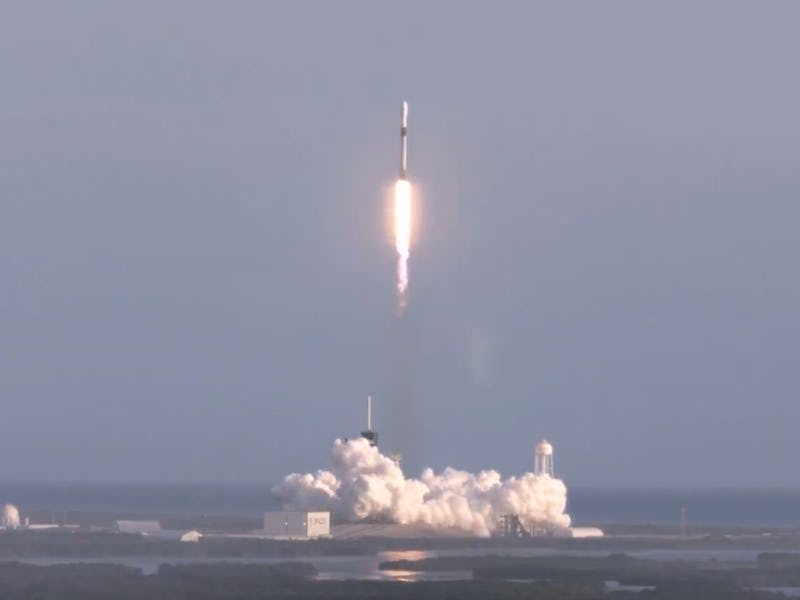SpaceX Starlink's 6th launch is a key milestone for ultra-fast internet
Elon Musk's internet constellation is taking shape.

Liftoff! SpaceX launched the sixth batch of 60 Starlink satellites Wednesday morning, the latest addition to the super-fast internet constellation. Starlink is expected to start providing low-latency internet service to the northern United States and Canada in 2020, with near-total coverage of the populated world next year.
The Falcon 9 rocket lifted off from Launch Complex 39A at NASA’s Kennedy Space Center in Florida at 8:16 a.m. Eastern time. This was the fifth mission for this booster, the first time SpaceX has re-used a booster five times. The plan was to land it on the Of Course I Still Love You droneship in the Atlantic Ocean. Unfortunately, the first stage booster did not successfully land after lift-off. SpaceX also deployed its Ms. Chief and Ms. Tree fairing vessels to recover the two halves of the protective shield.
It's a big landmark for SpaceX, as it marks the sixth launch for the Starlink constellation. The company's website previously claimed that six launches were needed to start providing internet service to the northern United States and Canada, but this has been replaced by a more vague commitment to starting service in 2020. The website also previously claimed that near-complete global coverage would arrive after 24 launches, but this has now been revised to a commitment to 2021.
Starlink is new ground for SpaceX, and it could dramatically improve satellite internet. SpaceX has applied for permission to launch up to 42,000 satellites, far more than the total number of satellites in orbit. The altitude of 550 kilometers is also designed to bring satellites closer to Earth, reducing latency. Where satellite internet services can offer latency of around 600 milliseconds and speeds of around 30 megabits, Starlink is aiming for the tens of milliseconds and gigabit speeds.
The Starlink satellites lifting off.
This is the sixth launch of 60 Starlink satellites.
- The first launch was on May 24, 2019, from Space Launch Complex 40 at the Cape Canaveral Air Force Station in Florida.
- The second was on November 11, 2019. Lauren Lyons, an engineer with the Starlink team, said during the launch that the new satellites “will make Starlink one of, if not the largest, satellite constellation to date.” This was the first launch of Starlink 1.0 with greater capacity.
- The third was on January 6, 2020. This launch tested out a non-reflective coating.
- The fourth was on January 29, 2020.
- The fifth was on February 17, 2020.
This was also the fifth launch of the B1048 Falcon 9 booster.
- The first launch was for the Iridium-7 mission on July 25, 2018 from Space Launch Complex 4 at the Vandenberg Air Force Base in California. This was one of eight missions supporting a major technology upgrade.
- The second was October 8, 2018, for the SAOCOM 1A mission at the same launch complex.
- The third time was February 22, 2019, for the Nusantara Satu mission. This was held at the Cape Canaveral Air Force Station in Florida.
- The fourth was on November 11, 2019, for the second Starlink mission, from the Cape Canaveral Air Force Station in Florida. This was the first time SpaceX had flown a booster four times.
Reusable rockets could help SpaceX cut costs for Starlink and reach new levels of affordability. This mission is set to receive a boost with Starship, a fully-reusable ship capable of lifting 100 tons to orbit.
As CEO Elon Musk explained earlier this month, Starship is practically necessary for the viability of the future constellation.